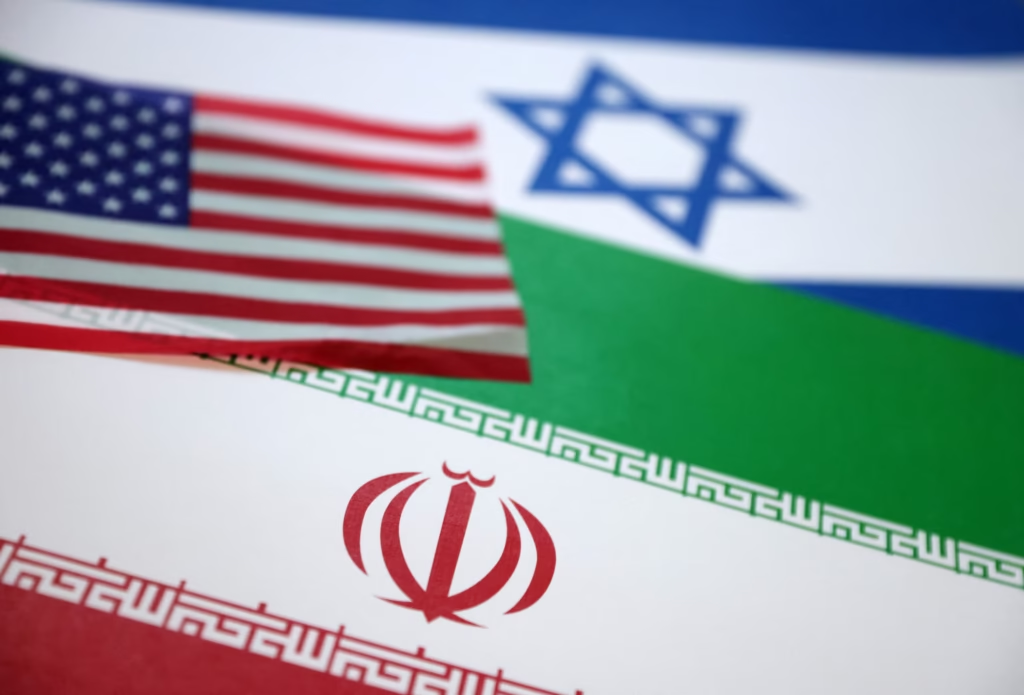Could a sacred rock start the next world war?
What if religion, politics, and nukes collide—in real time?
This isn’t ancient history. This is breaking reality.
Inside: secret deals, holy land standoffs, and a population time bomb no one’s talking about… until now.

Table of Contents
1. Lately, their exchanges have followed a familiar pattern.
2. Israel often strikes first, trying to stir things up.
3. while Iran replies just enough to stay in the game, but not trigger chaos.
4. Iran believes time is on its side—it’s playing the long game.

Faith & Force: The Power Source
5. But Israel has a pressure point on the home front.
6. That pressure comes from the ultra-Orthodox Jewish community.
7. In Israel, Jews typically fall into three groups based on religious observance.
8. There are secular Jews, Modern Orthodox, and the Ultra-Orthodox—known as the Haredim.
9. Haredim follow traditional Jewish law to the letter.
10. They live in close-knit religious neighborhoods.
11. Their lifestyle is almost monastic—very little interaction with wider society.
12. In Haredi areas, TV, internet, and radio are banned—they use simple “kosher phones” just for calling.
13. They may have computers, but no internet—news gets shared on neighborhood bulletin boards.
14. Most don’t work, relying on government support and prayer for up to 18 hours a day.

Draft Debate & Population Surge
15. They’re exempt from military service.
16. That policy started in 1949, under Prime Minister Ben-Gurion.
17. Zionist leaders wanted to bring Jews back but needed religious support.
18. Religious authorities argued forced return would invite disaster.
19. So Zionists offered perks to earn their backing.
20. The deal: Haredim got tax breaks, draft exemption, and state subsidies.
21. With only about 400 eligible men, the burden felt low initially.
22. Then their birth rate skyrocketed.
23. Today, Haredi families average about 7.5 children each.
24. They follow the Torah’s command to “be fruitful and multiply.”
25. They often marry in their teens—considered adults at 13—and typically avoid birth control.
26. From a few hundred families, their population swelled to around 1.2 million.
Seats, Strains & Supreme Gains
27. That’s roughly 12% of Israel’s total population.
28. And in a democracy, every vote counts equally.
29. That gave Haredi parties 18 of 120 Knesset seats.
30. By 2014, lawmakers realized they couldn’t maintain service exemptions.
31. Israel conscripts men and women, so a 12% exemption began to look unfair.
32. In 2017, the Supreme Court ruled the exemption unconstitutional, triggering draft efforts.
33. But many Haredi recruits were unprepared for army life.
34. Some didn’t learn multiplication until age 18—a gap in basic math.
35. The first 2,000 recruits entered training.
36. Three months later, they dropped out and preferred jail over serving.
37. They cited Sabbath restrictions and refusing orders from female officers.
38. They won’t even press elevator buttons on the Sabbath.

Coalition Clout & Regional Rout
39. The catch? Haredi parties are key to government coalitions.
40. Israel’s system means dozens of parties must share power.
41. In November 2022, Netanyahu’s Likud won 32 seats.
42. With hardline allies—Religious Zionism (14), Shas (11), United Torah Judaism (7)—they gained 64 seats.
43. That gave Haredi parties major influence over government policy.
44. Many Israelis resent Haredim for getting perks but skipping duties.
45. Their growth could reach 30% of the population in the next decade.
46. Iran sees that as a long-term threat to Israel’s national strength.
47. And Israel’s leaders are fully aware.
48. Some want a war with Iran to stall its nuclear program—and ease internal social pressures.
49. Haredi allies focus inward, but hardliners in the government are pushing for action.
Rock, Dome & the Trigger Zone


50. A key hardline force is the ultra-nationalist Religious Zionism party.
51. Its leader, Bezalel Smotrich, is now National Security Minister.
52. He’s made firm statements, suggesting expelling Arab citizens who aren’t “loyal.”
53. On January 3, 2023, he visited the Temple Mount unannounced—sparking international concern.
54. The Old City of Jerusalem, only 0.35 square miles, is the spiritual center.
55. The Temple Mount there is hugely sensitive.
56. It’s where Solomon’s Temple stood around 957 BCE.
57. Rome destroyed the Temple after war, leaving only the Western Wall.
58. That wall stands today and is revered as the Wailing Wall.
59. Afterward, a church stood there for centuries until it fell into ruin.
60. The site then remained abandoned for centuries.

Dome, Rock & Religious Shock

61. In 691 CE, the Islamic Umayyads took control peacefully.
62. They built the Dome of the Rock over the old Temple site, making it a mosque.
63. The site’s history of many rulers makes ownership extremely disputed.
64. Muslims believe Muhammad ascended to heaven from the rock there, which inspired the mosque.
65. Later, Jordan’s king gilded the dome in gold.
66. Now, it’s the third-holiest site in Islam.
67. Israel took control in 1967 but let Jordan’s Islamic trust manage it to avoid unrest.
68. That trust enforces rules: Muslims pray at the mosque, Jews at the Western Wall.
69. Jews believe their Temple must be rebuilt on that exact spot—no substitute allowed.
70. But rebuilding would mean removing the Dome of the Rock—an almost impossible step.
71. Both faiths revere the same rock—Jews for the Ark, Muslims for the Prophet’s ascent.
72. That shared sacred site makes compromise nearly impossible.
Visit, Trigger & Hamas’ Figure
73. So when a minister said Jews should pray on the Mount—and visited for just 13 minutes—things exploded.
74. That sparked outrage.
75. On October 7, 2023, Hamas launched “Al-Aqsa Flood”—attacking civilians and taking hostages.
76. The name meant “cleansing the site.”
77. The minister continued making visits afterward—fueling more tension.
78. And these hardliners still hold power.
79. If they left the coalition, the government could collapse.

Vote, Stay & Midnight Raid
80. Without them, Netanyahu loses his majority and might face new elections.
81. Polls say Likud would shrink significantly if that happened.
82. Between Netanyahu’s legal issues and reliance on radicals, Israel has swung sharply right.
83. On June 12, 2025, the opposition called for dissolving the Knesset.
84. The vote went 61–53 to keep the government alive.
85. Haredi parties protested, but Netanyahu promised milder draft rules to keep them in.
86. That gives him at least six months before the next vote.
87. Mere hours after that win—at midnight—Israel struck Iran.
88. On June 13, 2025, about 200 Israeli jets hit over 100 targets in Iran, dropping more than 330 bombs.

Blasts, Brains & Civilian Pains
89. Israel struck military and nuclear sites—and also apartments housing Iran’s top generals, killing civilians.
90. The strikes reportedly killed top IRGC commanders and nuclear scientists.
91. Fourteen nuclear scientists were among the dead.
92. Israel claims they were key players in Iran’s nuclear weapons planning.
93. That was a red line moment for Iran.
94. Iran is unlikely to stay quiet.
95. Israel has said the strikes will continue until its goals are met.
96. The potential for full escalation is real.
97. Iran’s strongest counter would be going nuclear.
98. It’s running about 14,000 centrifuges, with 11,000 enriching uranium to 5%.
20%, Weeks & War-streaks
99. Israel believes the rest are enriching to 20%—just weeks from weapons-grade.
100. At that point, it takes only 2–3 weeks to reach nuclear capability.
101. Iran is believed to have bomb designs ready—only missing the material.
102. It may respond with drone strikes, missiles, or by closing the Strait of Hormuz.
103. Iran might aim for symbolic retaliation without full-scale war.
104. But they’re up against a country tracking their top leaders in real-time.
105. That level of intelligence could shift everything.
106. And that’s what makes this moment so dangerous… and unpredictable.
107. The fuse may already be lit.

The War Plot Twist No One Ordered

No one thought the Russia–Ukraine war would drag on this long.
Right now, Israel has the upper hand—but wars love to surprise. Who wins? Too early to call. Odds say Iran might stop at drones and missiles. Why? Oil prices aren’t freaking out—yet. Sometimes, markets tell us more than missiles do.
Discover more from Alphazen Dynamics
Subscribe to get the latest posts sent to your email.



